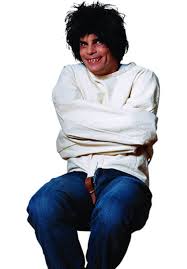
While the Budget horse trading goes on, S&P senior analyst Craig Michaels has appeared at the AFR to throw cold water upon everyone:
“We’re looking to see the government improve budget performance over the next few years…sizeable budget deficits were considered acceptable at the political and the community level then we might reassess, certainly, government commitment and also potentially the trajectory for public sector debt…We’re looking for action…Australia is fairly unique among AAA-rated sovereigns in that its external position is very weak…What that means is that to retain the AAA rating, everything else needs to remain very strong, including public finances…
Saul Eslake chimed in:
“Our banks have lots of liabilities which ratings agencies now recognise could become government liabilities in the wrong circumstances.”
And there you have it. The current account deficit growth model demands a AAA rating because…well…there’s no such thing as private banks anymore. Their foreign liabilities (which fund the deficit) are your foreign liabilities via your generous guarantee.
A few implications:
- this is what the conflicted Murray Inquiry needs to be about. If it does not address this key moral hazard then you’ll know the fix is in;
- the growth straight jacket is now obvious. If you have to aim for surplus across the cycle then the only way to grow is via a current account surplus or via private sector re-leveraging. The latter has its limits, with Moody’s warning last week that another year of house price growth and we’ll face ratings pressure owing to asset quality;
- making money in this new normal is not the same as it was in the old. You can’t just set and forget property and blue chip shares. Both rely on the current account deficit model to grow.
Would it be better to just lose the AAA rating? No, but given it’s probably going to happen anyway let’s explore what it would mean. The outcome will depend entirely upon when it happened. If it were now, during the global chase for yield, the dollar would fall but perhaps not very far initially given markets are a little skeptical of ratings these days. S&P would immediately have to cut the ratings on the major banks as well and their funding costs would rise. But again, it may not be too far if the global chase for yield is still roaring.
But, if it were to happen later, the most likely outcome being during a global withdrawal of liquidity associated with the next global crisis, then it would hurt a lot and could represent a tipping point. Bank funding costs would spike at the worst moment and prevent our last bit of monetary ammunition from having any effect because the banks would keep the rate cuts to boost their profitability.
The dollar would fall lower than otherwise, which may not seem bad, but if it were also associated with a banking crisis then it would risk a run on the currency and our many debts, bringing on a faster current account reckoning than otherwise. That would probably mean a mini-depression as import costs soared, house prices collapsed and the labour market fell apart.
There is no avoiding the adjustment. But it can be managed in far less destructive terms to protect Australians from that kind of social conflagration. The way out is to improve competitiveness via real exchange rate adjustment that includes a weaker dollar, real wage falls, high productivity growth, taxation reform, an export-growth focus and perhaps even some higher inflation than we’re used to.
The choice is between a rational polity taking pain upfront to protect the future versus a rabble of interests tearing at each other’s throats over the vestiges of the old model as it plunges into the abyss.

